Several months back I spoke on the phone with Scott Douglas, a writer and editor for Runner’s World and Running Times. My own book, Tread Lightly, had just come out, and Scott was writing a book of his own on minimalist running for Rodale Press (the publisher of Runner’s World and Running Times). We covered a lot of ground in our conversation, but one of the topics we focused on was the future of minimalist running shoes.
Scott’s book was just released, and an excerpt from the book on the future of minimalism was just published on-line at Running Times. I read the excerpt this morning, and quite honestly found it to be a fascinating read (and not just because I’m quoted in it several times!).
Scott weaves together interviews with a number of folks that I’ve come to know in the past few years. Joe Rubio from Running Warehouse provides his perspective on the running shoe market and where things are headed. I haven’t written about Joe much here, but if you’ve ever used the RUNBLOG10 code to buy shoes from Running Warehouse, he’s the guy that made that happen. Joe knows the shoe market as well as anyone, and his comments are highly insightful – he doesn’t see minimalist shoes gaining much additional market share going forward, be he tells Douglas that he does believe that they have left their mark on running shoe design:
They’re hugely influential,” Rubio says of the minimalist shoes it might seem he’s just been deriding. “If you look at things that are happening in the auto industry, you’re seeing Porsches that get 72 miles per gallon for the fastest production car they’ve ever made. The same thing’s happening in the running industry. You’ve got these really lightweight minimal shoes that are having a huge influence on how all shoes are made.”
Brian Metzler of Competitor.com is also a shoe geek and has written a bunch on running form and minimalist footwear. Metzler discusses the influence of new materials on shoe design:
“There are so many new materials being created over in Asia that are super lightweight, super strong, super resilient,” says Brian Metzler, a former Running Times senior editor who has wear-tested more than 1,000 shoes. “So whatever you need a piece of a shoe to do, whether it’s add stretchiness for comfort or add firmness, there are these new materials playing a huge role in the shoe revolution.”
Steve Magness is former assistant coach to Alberto Salazar at Nike and now coaches at the University of Houston. Steve writes the Science of Running blog and we share a very similar perspective when it comes to running shoes and form. Magness hones in on the fitting process, and discussed how misguided it is to focus on just one factor when fitting shoes:
“We can measure pronation easily, so that’s what everything is based on,” he says. “There’s going to be this shift of, well, maybe we can measure this other new thing really well, so let’s make everything entirely based on that.
“The reality is, what people need in a running shoe is probably from some crazy combination of foot mechanics and pronation and muscle activity and structure,” Magness says. “It’s hard to tease out all these things and say, ‘All right, here’s the perfect combination.’”
I don’t want to give too much else away since the article is a fantastic read, and I highly encourage you to head on over to Running Times and give it a look.
I just received a review copy of Scott Douglas’ new book, so I have not read it yet myself, but if the excerpt is an indication of quality of the rest of the book content, it should be a great read. It is now available for purchase at Amazon.com.
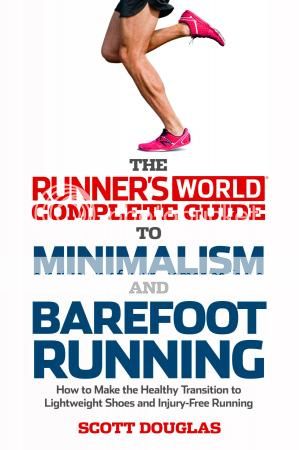
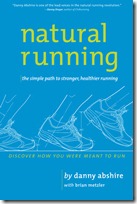

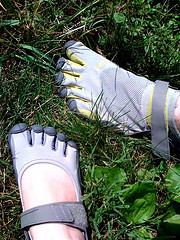
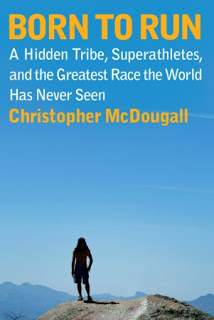
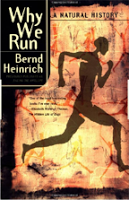














After reading the article, I’m left wondering what the pendulum might be swinging back toward. I can see how VFF sales are diminishing given the range of options now available. I can see how some runners who have tried minimalism might be opting for a little more padding (especially for long distance running). I understand that some might have gotten injured while trying minimalism and backed out of the market. But for me none of this sounds exactly like a pendulum swinging in the other direction. It sounds like the slowing of a movement that might be coming in for landing. I think the future greatly depends on the extent to which minimalistic running has left ist’s mark on science and education. I’m curious to know in years to come what types of shoes will be recommended by pediatricians and doctors for children. I’m curious to know what high school health teachers and track coaches will be saying to their students about shoes in ten years. I wonder additionally what the impact will be on the science of footwear beyond running (for other sports shoes and casual footwear). Minimalism may have reached it’s potential on the current generation, but if it is able to change old paradigms, I would expect there to be continued growth in the future. I’m by no means an authority on the subject, but I am interested in how it all plays out.
The future is a combination of lighter more functional materials both in the uppers, well underway as hardly as shoe has stitches anymore, and midsole outsole. In my runs so far the adidas boost material is the first revolution in midsole in probably decades and I have been running competively for almost 4 decades. Sadly the Boost could be lower drop. The future is also for sure lower or zero drop. For many if not most running super minimal cushion or no cushion on a regular basis is a prescription for injury. I see the future here as cushioned low or zero drop.
This was a good post and a good article. I have witnessed this “swing” happen with many people who tried minimalist shoes in attempt to quick fix their problems. I saw a lot of people think that a different type of show would solve nagging injuries…just like people who tried to rely on orthoses or the motion controlled paradigm thought those would be simple fixes for their problems.
In my mind, the shoe or types of shoes get a lot of blame because people will not take responsibility for the problems associated with their biological dysfunctions such as form issues, strength and neuromuscular deficits and poor mobility. For some, I think it is because of ignorance of these issues and for others its the idea of wanting things done easy or the path of least resistance.
This.
If there is some sort of backlash or even just a sense of disillusionment in the general/recreational running public about minimalist/natural form/etc. running, I think it might be at least partially linked to how shoe-centric the discourse is (or has become). To paraphrase Michael Jordan, “it’s not (just) about the shoes,” but to read shoe manufacturers’ marketing copy and some blogs (not a criticism of RunBlogger, mind you), you’d think simply switching to a minimalist shoe was some sort of miracle solution to the problems that sometimes plague runners.
I’ve certainly seen a recent increase in runners in my area using what can be described to a degree as minimalist (or at least more flexible, less cushioned) footwear—mostly Nike Frees—but offhand, it seems like many of them still crash on their heels with their knees fully extended in front of the body. The injuries that would eventually result from that combination of inappropriate form and footwear would probably quickly convince anybody dipping their toe into minimalism that the whole “minimalist movement” is just based on trendy junk science.
At least Nike Frees still have a fair bit of cushioning..
You raise good points. People will blame the shoes because they don’t want to take responsibility for ill-advised training errors and poor form. Many novice runners I see run too hard with a slow cadence and heavy, shuffling, stomping gait. It’s just not sustainable. They will hurt themselves eventually regardless of what they’re wearing on their feet.
People are just out of touch with their bodies. “Listen to your body” is a good piece of advice but too many people don’t know how to do that and don’t know what to “listen for”.
Vincent you make a very good point, but stating “they don’t want to take responsibility” is an assumption in some cases. People who are running (not necessarily a novice) with biomechanical/ form issues (which eventually leads to injury) may not even know they are doing it. Personally, when “taking responsibility” for issues I have had, I would go to drs/pt/ podiatrists looking for the answer and they traditionally just look at the symptoms and not the underlying root cause. Finding a healthcare provider who focuses on biomechanics, form, etc. has not been easy, Once you find that person they can put you on the right course to help you solve the real problem. Today I’ve been able to corrections and am much better at “being in touch” and “listen to my body” but I’ve determined if running is something I want to continue to do, for now it’s an evolution and will take time to feel “natural”.
The shoes do get a lot of the blame. Biological dysfunctions do play a role for sure. Another factor is that running gets you out in the fresh air, can be a great stress reliever, makes you feel great is really kind of addictive, is highly time effective as exercise that is until…miles get piled on and speed increased with no base, sleep is cut back to run very early in the morning,, race after race, with no recovery, I see it all the time and would venture that just plain overdoing it is the cause of half of all running injuries.
I can’t help but feel the suggestion that there is some kind movement away from minimalism to some middle ground more wishful thinking/positioning that this middle ground is somehow a natural market correction and a good thing. I suspect it’s an example of conformational bias.
It’s still very early days for the minimalist movement. Traditional shoe outlets still dominate running shoe purchases and still predominately stock traditional trainers with the minimalist shoes being sold as expensive, niche product if they are available at all. There is little reason why minimalist products shouldn’t be available at lower costs, it’s just a matter of ramping up production and selling high quantities. Inertial of the big retailers, shoe companies and companies is what is keeping traditional shoes selling.
The science is still in it’s infancy as well. The signs look to favour minimalist shoes for weight, fit and proprioceptive benefits as well as changes in form that they can encourage. Is the science suggesting that a swing back to a middle ground sensible?
I’m hopeful that while the market will seen swings this way and that as different fads come and go, over the years the whole market center of gravity will shift towards lighter, better fitting, more flexible and less instability causing cushioning. We are already seeing this and links article suggests this as well, but seeing a whole market movement isn’t a swing back at all but a swing to more minimalist shoes.
Good points. The reality is that most running shoes are sold to non-runners at shopping malls and big box stores. These sales make up a huge portion of the profits that companies make. Best to support companies that are truly dedicated to making functional shoes for runners and that focus on the specialty running market.
—-
Pete Larson’s Web Links:
-My book: Tread Lightly: link to ow.ly
-Blog: https://runblogger.com
-Twitter: link to twitter.com
-Facebook Page: link to facebook.com…
-Discussion Forum: https://runblogger.com/forum
Scott’s stuff is really, really good. I look forward to reading his articles.
The pendulum is swinging back because of reasons listed above and below, and because so many of the shoe companies have this need to put as much “technology” in their products as possible. You hear it from almost all of them. They very sincerely don’t believe that a running shoe is viable unless it has marketable “technology” somewhere on it.
Amby said it, Bill has said it, Arthur said it, in his definitive manner: We should be in the least amount of shoe we’re comfortable in. There was that one guy who ran 2:2X for years at Boston. In the Beast. So, there’s that. I don’t know any more. I’m much more likely to want to listen to those who have “been there, done that” than marketing executives. Those who began the whole movement are the ones we should be listening to, and not to the guys in lab coats.
There are so many variables when we talk about running and injuries. Yet we tend to focus on shoes because it absolves us of the responsibility, other than making a poor footwear selection.
It just seems to me that in the big picture, in the grand scheme of things, what you have on your feet is going to be the thing that least affects your ability to move linearly from Point A to Point B. Paavo Nurmi had it right:
Mind is everything. Muscle – pieces of rubber. All that I am, I am because of my mind.
I honestly can’t see myself ever running in a 12mm drop, traditional shoe ever again, and I suspect that there are plenty of folks like me. Once you try less shoe, unless you have a problem, I suspect it’s very unlikely you would go back. That being said, I also don’t run much in ultraminimal stuff these days, but I feel that making the journey into that category was necessary to bring me to where I am now. Give me a simple shoe with a bit of cushion that stays out of the way – like the Saucony A5 or NB RC1600 – and I’m set. And if it’s cheap, all the better.
—-
Pete Larson’s Web Links:
-My book: Tread Lightly: link to ow.ly
-Blog: https://runblogger.com
-Twitter: link to twitter.com
-Facebook Page: link to facebook.com…
-Discussion Forum: https://runblogger.com/forum